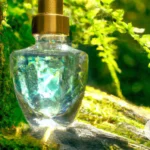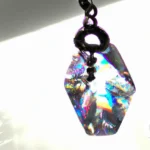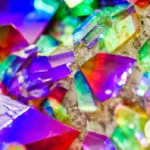Crystals have long been used for their healing properties and positive energy, but did you know that introducing crystals to children can be a safe and educational experience? Engaging children in the world of crystals can enhance their creativity, promote mindfulness, and foster a connection with nature. In this article, we will explore the benefits of crystal education for children and provide you with step-by-step guidance on how to introduce crystals to children in a safe and educational way. From choosing the right crystals to creating a safe environment for exploration and engaging activities, we will cover everything you need to know to embark on this captivating journey with your little ones. So, let’s dive in and discover the wonders of crystals together!
The Benefits of Crystal Education for Children
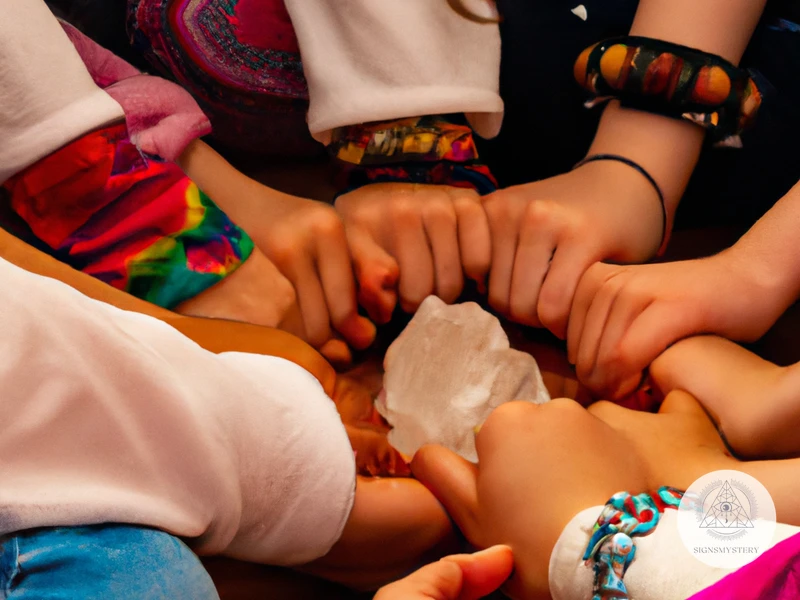
Crystal education for children offers a multitude of benefits that can positively impact their overall well-being and development. Through their enchanting beauty and energy, crystals have the power to enhance creativity, promote mindfulness, and foster a deeper connection with nature.
1. Enhancing Creativity and Imagination: Crystal exploration encourages children to tap into their imagination and unleash their creativity. The vibrant colors, intricate patterns, and unique shapes of crystals can inspire artistic expression and imaginative play. They can be incorporated into storytelling, role-playing games, and even used as props for imaginative adventures. By engaging with crystals, children can expand their creative thinking skills and develop a greater appreciation for the beauty and wonders of the world around them.
2. Promoting Mindfulness and Emotional Well-being: Crystals have a calming and soothing effect that can help children develop mindfulness practices. By holding or meditating with crystals, children can learn to focus their attention, center themselves, and regulate their emotions. Crystals such as amethyst or rose quartz are known for their calming properties and can help children manage stress, anxiety, or other challenging emotions. Additionally, crystals can serve as gentle reminders for gratitude, positivity, and self-care, fostering emotional well-being and self-awareness in children.
3. Fostering a Connection with Nature: Introducing children to crystals provides an opportunity to cultivate a deeper connection with nature. Crystals are formed naturally within the Earth, and their vibrant energy can serve as a bridge between children and the natural world. By learning about different crystals and their unique properties, children can develop a sense of wonder and appreciation for the Earth’s abundant treasures. This connection with nature can instill a sense of environmental stewardship and a desire to protect and care for our planet.
By incorporating crystal education into a child’s learning and play experiences, parents and educators can promote their holistic development and well-being. It is important to note that crystal education should always be approached with caution and respect for safety guidelines to ensure a positive and enriching experience for children.
1. Enhancing Creativity and Imagination
1. Enhancing Creativity and Imagination: When it comes to introducing crystals to children, one of the key benefits is the enhancement of their creativity and imagination. Crystals come in a vast array of colors, shapes, and sizes, captivating young minds and sparking their imagination. Their intricate patterns and unique forms offer endless possibilities for creative exploration.
To encourage creativity, provide children with a variety of crystals and allow them to engage in open-ended play. They can create their own stories, where crystals become magical elements of a fantastical world. Children can use crystals as characters, props, or even as inspiration for art projects.
Another way to enhance creativity is through crystal identification games. Gather a collection of different crystals and encourage children to sort them based on their color, shape, or size. This activity not only enhances their cognitive skills but also allows them to explore and express their creativity through classification and organization.
Additionally, crystals can be used in crafts and DIY projects. You can organize a crystal painting session, where children use crystals as stamps to create beautiful patterns on paper or fabric. They can also make crystal-inspired jewelry by stringing beads made of crystals onto bracelets or necklaces. These creative endeavors not only promote artistic expression but also allow children to incorporate the positive energy of crystals into their crafts.
Remember to provide guidance and support during these activities, fostering children’s imagination while ensuring their safety. By nurturing their creativity through crystal exploration, children can develop their artistic skills, problem-solving abilities, and a deeper appreciation for the beauty that surrounds them.
Anchor link: Choosing the right crystals is essential to ensure children’s safety and maximize the benefits of their creative and imaginative endeavors.
2. Promoting Mindfulness and Emotional Well-being
Promoting mindfulness and emotional well-being in children is a crucial aspect of their overall development, and crystals can play a significant role in this process. Here are some ways in which crystals can enhance mindfulness and emotional well-being:
1. Calming and Grounding Energy: Crystals like amethyst and clear quartz possess calming and grounding energies that can help children find a sense of peace and tranquility. These crystals can be used during quiet time or meditation exercises to encourage a calm state of mind and relaxation. By holding or placing these crystals on their bodies, children can experience a soothing effect that aids in reducing stress and anxiety.
2. Developing Self-Awareness: Crystals serve as powerful reminders for self-reflection and self-awareness. By utilizing crystals like rose quartz, which is associated with love and compassion, children can become more attuned to their own emotions and those of others. Encouraging children to hold or meditate with these crystals allows them to explore their feelings and cultivate empathy, which is essential for healthy emotional development.
3. Establishing Rituals: Incorporating crystals into daily rituals can establish a sense of routine and mindfulness for children. For example, creating a ritual of choosing a crystal to hold or carry throughout the day can develop a mindful connection to the present moment. This practice can serve as a gentle reminder for children to pause, breathe, and focus on the positive energy that the crystal represents.
4. Encouraging Positive Affirmations: Crystals can be paired with positive affirmations to cultivate a positive mindset and emotional well-being. Children can choose a crystal that resonates with a particular affirmation, such as using citrine for confidence or aventurine for abundance. By incorporating these affirmations into their daily routine, children develop a positive mindset and reinforce feelings of self-worth and empowerment.
It is important to note that while crystals can be a valuable tool in promoting mindfulness and emotional well-being in children, they should never be seen as a substitute for professional help or therapy if needed. The use of crystals should always be approached with guidance and in conjunction with appropriate emotional support. To ensure children’s safety and well-being, it is crucial for parents and caregivers to be well-informed about the properties and uses of crystals.
3. Fostering a Connection with Nature
Fostering a connection with nature is a key benefit of crystal education for children. Crystals, with their origins deep within the Earth, serve as a reminder of the wonders and abundance of the natural world. By incorporating crystals into their learning and play experiences, children can develop a deeper appreciation for the Earth’s treasures and a sense of stewardship towards the environment.
Exploring the beauty of crystals: Introducing children to the diverse range of crystals available can ignite their curiosity and sense of wonder. Showcasing crystals in various forms, such as raw specimens or polished stones, allows children to observe the unique colors, shapes, and textures that nature creates. Encouraging them to explore and touch the crystals helps to establish a tactile connection with the natural world.
Connecting with the energy of crystals: Crystals are believed to carry energy and vibrations that can resonate with individuals. Teaching children about the different properties and energies of crystals can deepen their understanding of the interconnectedness between humans and nature. For example, they can learn about how amethyst promotes calmness and serenity or how rose quartz encourages love and compassion. By holding or meditating with crystals, children can experience a sense of connection with the Earth’s energy.
Encouraging outdoor adventures: Crystal education can also inspire children to explore outdoor environments. Whether it’s going on nature hikes, visiting gem and mineral shows, or even participating in crystal mining activities, these experiences provide children with opportunities to witness the wonders of nature firsthand. Connecting crystals to outdoor adventures allows children to see how these treasures are found in the natural world and fosters a deeper appreciation for the environment.
By fostering a connection with nature through crystal education, children develop a greater understanding of their place in the ecosystem and are more likely to develop a desire to protect and care for the Earth. Encourage children to spend time outdoors, engage with crystals, and explore the natural beauty that surrounds them. This connection with nature sets the foundation for a lifelong appreciation and stewardship of the environment.
(Note: As there were no relevant anchors for internal links in this section, no links have been added.)
Choosing the Right Crystals for Children
When it comes to choosing crystals for children, it is important to prioritize safety and age-appropriateness. Here are some key factors to consider:
1. Safe and Non-Toxic Crystals: Selecting crystals that are safe and non-toxic is crucial when introducing them to children. Certain crystals may contain minerals or elements that can be harmful if ingested. It is best to avoid crystals that have a high mineral content, such as pyrite or malachite, which can be toxic. Instead, opt for crystals like clear quartz or amethyst, which are generally considered safe for children to handle.
2. Age-Appropriate Crystals: Consider the age and developmental stage of the child when selecting crystals. For younger children, larger crystals with smooth edges are recommended to minimize choking hazards. Selenite, rose quartz, or aventurine are examples of crystals that are safe and suitable for younger children. Older children can safely explore a wider variety of crystals, but it is still important to assess each crystal based on its safety and appropriateness for their age and maturity level.
When introducing children to crystals, it is also beneficial to focus on crystals that promote positive qualities such as calmness, focus, and protection. Crystals like amethyst for calming and clear quartz for clarity and focus can be excellent choices for children. Additionally, smoky quartz, known for its protective properties, can help children feel grounded and shielded from negative energies.
By carefully selecting safe and age-appropriate crystals, parents and educators can ensure a positive and enriching experience for children as they explore the fascinating world of crystals. Remember to always supervise children when handling crystals and teach them about proper handling and respect for these precious natural treasures.
1. Safe and Non-Toxic Crystals
When introducing crystals to children, it’s crucial to prioritize their safety. Choosing safe and non-toxic crystals ensures that children can explore and interact with them without any harm. Here are some essential factors to consider when selecting crystals for children:
1. Mohs Hardness Scale: The Mohs hardness scale measures the hardness of minerals and determines their ability to withstand scratches and breakage. It is advisable to choose crystals with a lower ranking on the scale (e.g., 1-4) as they are less likely to break and pose a safety hazard. Some examples of soft crystals appropriate for children include rose quartz and lapis lazuli.
2. Smooth Surfaces: Crystals with smooth surfaces are ideal for children as they eliminate the risk of sharp edges or rough textures that could potentially cause injury. Look for polished or tumbled stones rather than raw or rough specimens. Smooth crystals like amethyst or sodalite are safer for handling.
3. Non-Toxic Composition: Ensure that the crystals you choose for children are non-toxic and pose no harm if accidentally ingested. Avoid crystals that contain heavy metals or toxic minerals. It’s always prudent to consult a reliable crystal guide or expert to confirm the safety of specific crystals.
4. Size: Opt for larger-sized crystals that are less likely to be swallowed or pose a choking hazard. Small crystals should be avoided, especially for younger children who tend to explore objects orally.
While there are numerous crystals that are safe for children, it is essential to exercise caution and use your judgment when introducing crystals to young ones. Educate yourself on the properties and characteristics of different crystals before allowing children to handle them. Always supervise their crystal interactions to ensure a safe and enjoyable experience.
By selecting safe and non-toxic crystals, you can provide children with the opportunity to explore the beauty and energy of crystals without compromising their well-being. Remember, safety should always be the top priority when introducing crystals to children.
2. Age-Appropriate Crystals
When choosing crystals for children, it is essential to consider their age and developmental stage. Different crystals have varying energies and properties, so selecting age-appropriate crystals ensures a safe and beneficial experience for children.
1. Young Children (Ages 3-6): For young children, it is best to focus on larger, smooth, and non-sharp crystals to avoid any potential choking hazards or accidents. Crystals such as amethyst, clear quartz, and rose quartz are gentle and supportive choices for this age group. Amethyst promotes calmness and peaceful sleep, clear quartz amplifies positive energy, and rose quartz encourages love and kindness.
2. Children (Ages 7-12): As children grow older, they can explore a wider range of crystals. Crystals like citrine, aventurine, and carnelian can be introduced to support their emotional well-being, confidence, and creativity. Citrine promotes positivity and self-esteem, aventurine encourages growth and abundance, and carnelian stimulates creativity and motivation.
3. Teenagers (Ages 13+): Teenagers can explore a broader spectrum of crystals and their specific properties. Crystals like smoky quartz, lapis lazuli, and sodalite can be beneficial for this age group. Smoky quartz provides grounding and protection, lapis lazuli enhances intuition and wisdom, and sodalite stimulates logical thinking and communication.
It’s important to note that every child is unique, so their individual preferences and needs should be taken into consideration when selecting crystals. Additionally, it is recommended to consult books, guides, or reputable websites to further understand the properties and uses of specific crystals.
Remember to regularly cleanse and recharge crystals to maintain their energetic properties. One method is by using moonlight to cleanse and charge crystals. Placing them in the moonlight overnight can help remove any negative energy they may have absorbed and restore their natural vibrancy. For more information on this cleansing and charging method, you can refer to the article on using moonlight to cleanse and charge crystals. By selecting age-appropriate crystals, children can safely explore and benefit from the energies and wonders of the crystal world.
Creating a Safe Environment for Crystal Exploration
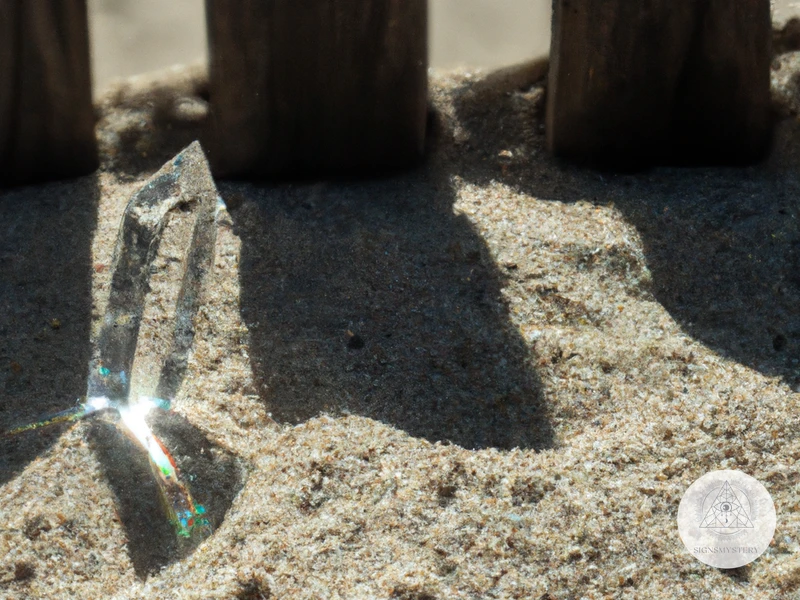
When introducing children to crystal exploration, it is essential to create a safe and nurturing environment that ensures their well-being. Here are three key steps to follow:
1. Setting Clear Safety Rules: Establishing clear safety rules is crucial to ensure that children understand how to handle crystals responsibly. Teach them that crystals are delicate and should be handled with care to avoid dropping or breaking them. Emphasize the importance of gentle handling and avoiding putting crystals in their mouths. It is also essential to explain that certain crystals may have sharp edges, so they should be cautious when touching them. By setting these rules, children can develop a sense of respect and responsibility towards crystals while ensuring their safety.
2. Providing Adequate Supervision: Children should be supervised during crystal exploration to prevent accidents or misuse. An adult should be present to guide them, answer their questions, and ensure they follow the established safety rules. By providing supervision, adults can actively engage with children, fostering their understanding of crystals and their properties.
3. Ensuring Proper Handling of Crystals: Teach children how to handle crystals properly to prevent any negative experiences. Explain that some crystals may have specific properties that can be activated by touch, such as the grounding and protective properties of /harnessing-protective-properties-smoky-quartz/. It is important to also teach them about cleansing and charging crystals, such as using moonlight or other methods. Reinforce the idea that crystals should be respected as natural treasures and not treated as toys.
By creating a safe environment for crystal exploration, children can fully immerse themselves in this educational and enlightening experience. Encouraging their curiosity while ensuring their safety is the key to fostering a lifelong love and appreciation for crystals.
1. Setting Clear Safety Rules
When introducing crystals to children, it is essential to establish clear safety rules to ensure their well-being and prevent any accidents or mishaps. Here are some guidelines to consider when setting clear safety rules:
1. Handle with Care: Teach children the importance of handling crystals with care and gentleness. Emphasize the fragility of crystals and explain that rough handling can cause them to break or chip. Encourage children to hold crystals with both hands, avoiding any sudden movements or dropping them on hard surfaces.
2. No Putting Crystals in the Mouth: Make it clear to children that crystals are not meant to be put in their mouths. Some crystals may contain small particles or elements that can be harmful if ingested. Explain the potential dangers and encourage children to explore crystals using their senses other than taste.
3. Be Mindful of Sharp Edges: Not all crystals have smooth surfaces, and some can have sharp edges that can cause injury. Teach children to be aware of this and to handle crystals with caution, especially if they have any sharp or jagged parts. It may also be a good idea to avoid giving very young children crystals with sharp edges to minimize the risk of accidents.
4. Wash Hands after Handling: Crystals can accumulate dirt, dust, or oils from repeated handling. Encourage children to wash their hands thoroughly after handling crystals to maintain hygiene and prevent any potential allergic reactions or skin irritations.
5. Supervision is Key: Ensure that children are always supervised when handling crystals, especially if they are very young or new to working with crystals. Supervision helps to prevent accidents, ensures that safety rules are followed, and allows for immediate assistance if needed.
6. Store Crystals Safely: Teach children the importance of properly storing their crystals when not in use. Provide a designated space or container where they can keep their crystals safely. This will help prevent damage to the crystals and reduce the risk of them being misplaced or lost.
By setting clear safety rules, children can enjoy their crystal experiences while understanding the importance of responsible handling and safety precautions. Regularly reinforce these rules to ensure that children continue to engage with crystals in a safe and respectful manner.
2. Providing Adequate Supervision
When introducing crystals to children, it is crucial to provide adequate supervision to ensure their safety and maximize the educational experience. Here are some important considerations to keep in mind:
1. Educate Yourself: Before supervising children with crystals, it is essential to educate yourself about the specific crystals you will be working with. Research their properties, potential hazards, and any precautions that need to be taken. This knowledge will help you guide the children effectively and answer their questions confidently.
2. Set Clear Boundaries: Establish clear rules and boundaries regarding the handling and use of crystals. Explain to children the importance of treating crystals with respect and care. Encourage them to ask for permission and assistance before handling or using any crystals. This helps instill a sense of responsibility and prevents accidents or misuse.
3. Monitor Interactions: It is vital to closely monitor children’s interactions with crystals to ensure they are using them appropriately and safely. Keep a watchful eye on younger children who may put small crystals in their mouths or engage in rough play that may damage the crystals. Regularly check that crystals are not broken or chipped, as sharp edges can pose a safety hazard.
4. Provide Demonstrations: Show children how to handle crystals properly, emphasizing gentle touch and careful handling to avoid dropping or damaging them. Demonstrate various activities or techniques, such as crystal cleansing or meditation, so children can learn the correct methods from your example.
5. Address Questions and Curiosities: Encourage children to ask questions and express their curiosities about crystals. Take the time to provide age-appropriate explanations and engage in meaningful discussions. This fosters a sense of open communication and enhances the children’s understanding and appreciation of crystals.
By providing adequate supervision, you can ensure that children have a safe and enriching experience with crystals. Remember to be patient and attentive, offering guidance and support as needed, to create a positive and educational environment for crystal exploration.
3. Ensuring Proper Handling of Crystals
Proper handling of crystals is crucial to ensure both the safety of children and the preservation of the crystals’ energetic qualities. Here are some important guidelines to follow when introducing children to crystals.
1. Teach Respectful Handling: Start by teaching children to handle crystals with care and respect. Emphasize the importance of treating crystals gently to avoid any damage or breakage. Explain that crystals are delicate and can easily chip or scratch, so it’s essential to hold them with a gentle touch.
2. Supervise Handling: When children are handling crystals, it is important to provide adequate supervision. This ensures that they are using the crystals responsibly and prevents any potential accidents or misuse. Be present to guide them in proper handling techniques and answer any questions they may have.
3. Clean Hands: Encourage children to wash their hands before and after handling crystals. This helps maintain the cleanliness of the crystals and prevents the transfer of dirt, oils, or other substances onto the crystal’s surface. Clean hands also minimize the risk of allergic reactions, especially if children have sensitivities to certain minerals or substances.
4. Avoid Ingestion: Teach children that crystals should never be ingested. Some crystals, especially small ones, may pose a choking hazard. Additionally, ingesting certain minerals can be harmful to health. Emphasize the importance of enjoying crystals through observation, meditation, or simply holding them, rather than putting them in the mouth.
5. Store Properly: When not in use, store crystals in a safe and dedicated container. This helps protect them from damage or accidental dropping. Consider using a soft fabric pouch or a box with compartments to keep different crystals organized and prevent them from scratching against each other.
By ensuring proper handling of crystals, children can develop a sense of responsibility and reverence for these natural treasures. It is also essential to educate them about the specific properties or potential hazards associated with certain crystals, reinforcing the importance of treating each crystal with care and respect. Remember, crystal exploration should always be a supervised activity to ensure a safe and enjoyable experience for children.
Engaging Activities to Teach Children about Crystals
Engaging children in activities that teach them about crystals can make the learning experience fun, interactive, and memorable. These activities not only allow children to explore the fascinating world of crystals but also provide hands-on learning opportunities that cater to different learning styles. Here are three engaging activities to teach children about crystals:
1. Crystal Sorting and Identification: Set up a crystal sorting station with a variety of crystals of different shapes, colors, and sizes. Provide children with magnifying glasses, reference books, or identification charts to help them learn about each crystal’s unique properties. Encourage children to sort the crystals based on their characteristics, such as colors or patterns, and engage in discussions about what they observe. This activity helps children develop observation skills, critical thinking, and knowledge about different crystals.
2. Crystal Meditation and Visualization: Introduce children to the calming and grounding effects of crystal meditation. Create a quiet and comfortable space where children can sit or lie down with a chosen crystal. Guide them through a simple meditation by asking them to close their eyes, take deep breaths, and hold the crystal in their hands. Encourage them to imagine the crystal’s energy flowing through their bodies, bringing them a sense of peace and harmony. After the meditation, provide a safe space for children to share their experiences and emotions. This activity promotes mindfulness, relaxation, and emotional well-being.
3. Crystal Art and Crafts: Engage children’s creativity by incorporating crystals into various art and craft projects. For instance, they can create crystal mandalas by arranging small crystals in intricate patterns, or they can use crystals as inspiration to paint or draw colorful artwork. Another activity is making crystal jewelry using wire or string, allowing children to design their own unique pieces. These hands-on activities not only encourage artistic expression but also deepen children’s connection with crystals and their beauty.
Remember to adapt these activities based on the age
Subscribe to Our Newsletter
Sign up to receive the latest news and updates.
1. Crystal Sorting and Identification
Crystal sorting and identification is an engaging activity that can introduce children to the fascinating world of crystals while developing their cognitive and observational skills. This activity involves categorizing and classifying different crystals based on their physical characteristics, such as color, shape, transparency, and texture.
To begin, gather a collection of various crystals and provide children with a safe and well-lit space to examine them. Encourage them to touch the crystals gently and observe their unique features. Guide them to notice the differences and similarities between the crystals, and ask questions to stimulate their critical thinking skills.
Sorting: Start by introducing a simple concept for sorting, such as color. Ask children to group the crystals into different color categories using trays or bowls designated for each color. This activity helps develop their visual discrimination skills and enhances their ability to identify and differentiate between different hues.
Identification: Once the crystals are sorted by color, guide children to further explore and identify the crystals using other characteristics. Provide them with magnifying glasses or reference books to examine the crystals more closely. Encourage them to describe the crystals based on their shape, texture, and transparency, and guide them in using these traits to identify the crystals’ names.
To further enhance the learning experience, consider creating a visual chart or booklet where children can document the crystals they have sorted and identified. This allows them to review and reinforce their understanding of different crystal properties.
Remember to emphasize the importance of gentle and respectful handling of the crystals throughout the activity. This activity not only promotes cognitive skills but also nurtures children’s curiosity and appreciation for the unique qualities of crystals.
2. Crystal Meditation and Visualization
Crystal meditation and visualization can be a powerful and engaging activity for children to deepen their connection with crystals and explore their inner world. Here are some step-by-step guidelines to introduce crystal meditation and visualization to children:
1. Create a Peaceful Space: Set up a quiet and serene space where your child can feel relaxed and at ease. It could be a cozy corner in their room or a designated area in the house. Decorate the space with soft lighting, cushions, and perhaps even some calming nature sounds or instrumental music.
2. Choose a Crystal: Let your child choose a crystal that resonates with them or guide them in selecting one that aligns with their intention for the meditation. Explain to them the unique properties and energies of the chosen crystal.
3. Set an Intention: Encourage your child to set an intention for the meditation. It could be something like finding inner peace, releasing stress, or embracing self-love. This helps to focus their energy and attention during the meditation.
4. Guided Visualization: Guide your child through a simple and age-appropriate visualization exercise. You can use your own words or find guided meditation scripts specifically designed for children. Invite them to close their eyes, take deep breaths, and imagine themselves surrounded by the gentle energy of the crystal.
5. Incorporate the Crystal: Encourage your child to hold the crystal in their hands or place it on their body during the visualization. They can visualize the crystal’s energy flowing through them, bringing their intention to life.
6. Reflect and Share: After the meditation, provide a space for your child to share their experiences and reflections. Ask open-ended questions to encourage them to express their thoughts, emotions, and any insights they may have gained.
7. Practice Regularly: Encourage your child to engage in crystal meditation and visualization regularly, even for just a few minutes a day. Consistency is key in developing a deeper connection with crystals and reaping the benefits of this practice.
By incorporating crystal meditation and visualization into your child’s routine, you can help them cultivate a sense of inner calm, mindfulness, and self-awareness, while strengthening their bond with crystals. Remember to adapt the practice to suit your child’s age and attention span, making it a fun and engaging experience for them.
3. Crystal Art and Crafts
3. Crystal Art and Crafts: Engaging children in crystal art and crafts can be a fun and interactive way to explore the beauty and properties of crystals. Here are some creative activities that you can try with your children:
1. Crystal Painting: Provide your child with a canvas, paintbrushes, and a variety of crystal-inspired colors. Encourage them to create their own artwork using crystals as their inspiration. They can paint vibrant abstract patterns, crystal formations, or even incorporate real crushed crystals into their paintings for texture and sparkle.
2. Crystal Jewelry Making: Set up a jewelry-making station with various beads, strings, and wire. Introduce your child to crystal beads and guide them in creating their own unique crystal jewelry pieces, such as bracelets, necklaces, or even keychains. This activity allows them to explore their creativity while also learning about the different crystal properties.
3. Crystal Sun Catchers: Using clear plastic or glass beads, fishing line, and a hoop or wire, help your child create their own crystal sun catchers. This craft not only showcases the beauty of crystals but also adds an element of magic as the sunlight reflects and refracts through the crystal beads, casting magnificent colors and patterns in the surrounding space.
4. Crystal Collages: Collect a variety of crystal-themed magazines or print out images of crystals from the internet. Provide your child with a poster board or canvas and let them create a crystal collage by cutting out and arranging the crystal images in interesting and creative ways. This activity allows them to learn about different crystal types while also developing their fine motor skills.
5. Crystal Garden: Create a miniature garden using colored sand, pebbles, and various crystal specimens. Help your child arrange the crystals in the garden, creating a beautiful and magical space. This activity not only encourages creativity but also allows children to learn about different crystals and their unique properties.
Encouraging your child to engage in crystal art and crafts offers a hands-on approach to learning about crystals while also nurturing their artistic abilities. These activities allow children to express their creativity, develop fine motor skills, and deepen their understanding and appreciation for crystals in an enjoyable and interactive way.
Resources for Further Learning
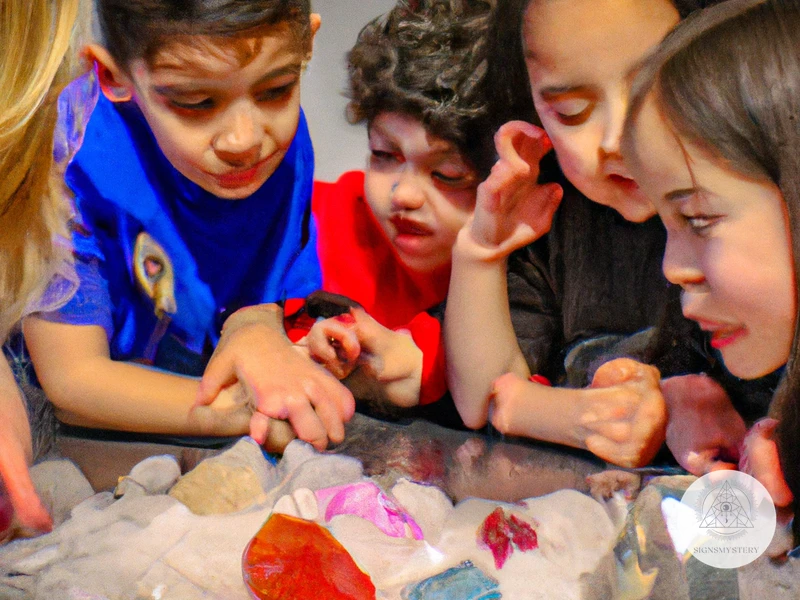
When it comes to further learning about crystals for children, there are various resources available that can enhance their knowledge and understanding. Here are some recommended resources to explore:
1. Crystal Books and Guides for Children:
– “The Crystal Kingdom: Discover the Magic of Crystals and Stones” by Frankie J. Jones: This interactive book introduces children to different crystals and their properties through engaging stories and activities.
– “Crystals for Kids: Learn the Names of 17 Crystal Energy Friends” by Amber Polo: This beautifully illustrated book provides a simple introduction to popular crystals, including their names and energetic qualities.
2. Crystal-Related Websites and Apps:
– Crystal Vaults (www.crystalvaults.com): This website offers a wealth of information on crystals, including their metaphysical properties, history, and uses. It also provides a crystal directory with detailed descriptions and images.
– Crystal Guru (available on iOS and Android): This app features a collection of crystal information, crystal quizzes, and guided meditations specifically designed for children to learn about crystals in a fun and interactive way.
3. Crystal Kits and Subscription Boxes:
– Crystal Kids Box (www.crystalkidsbox.com): This subscription box delivers curated crystal kits for children, including a variety of crystals, informational guides, and activities.
– Crystal Gemstone Shop (www.crystalgemstoneshop.com): This online store offers crystal kits and sets that are specifically designed for children, providing a selection of age-appropriate crystals along with educational materials.
4. Museum Exhibits and Local Workshops:
Check your local museums and community centers for exhibits or workshops that focus on crystals and geology. These hands-on experiences can provide children with the opportunity to see and touch different crystals, learn interesting facts, and interact with experts.
Remember, always ensure that the resources you choose are age-appropriate and aligned with your child’s interests and learning style. By exploring these resources, children can delve deeper into the fascinating world of crystals and continue their crystal education journey with excitement and curiosity.
1. Crystal Books and Guides for Children
When it comes to introducing crystals to children, there are various crystal books and guides that can serve as valuable resources for their education. These books are specifically designed with children in mind, presenting information in a fun and engaging manner. Here are some noteworthy crystal books and guides for children:
1. “Crystal Children: A Guide to Teaching Your Child About Crystals” by Maureen Incutti: This comprehensive guide offers an introduction to crystals and their meanings, providing parents and educators with suggestions on how to incorporate crystals into a child’s daily life. The book includes interactive activities, crystal identification guides, and age-appropriate explanations of crystal properties.
2. “Rock and Crystal Activity Book” by Elaine McKeegan: This activity book combines education with hands-on fun. It includes puzzles, coloring pages, and interactive exercises that teach children about different types of rocks and crystals. With its interactive nature, this book is a great way to keep children engaged and eager to learn.
3. “Crystals for Kids: Learn the Energy Properties and Uses of Healing Crystals” by Cassandra Eason: Geared towards slightly older children, this book provides detailed information about various crystals and their healing properties. It covers topics such as chakra balancing, crystal grids, and how to use crystals for self-care. The book also includes exercises and meditations tailored for children.
4. Online Resources: Aside from books, there are numerous websites and apps available that offer interactive and educational content about crystals for children. These resources often include crystal identification guides, virtual crystal collections, and interactive games that make learning about crystals enjoyable.
Whether you prefer physical books or digital resources, these crystal books and guides can provide children with a solid foundation in crystal education. They offer a combination of educational content, activities, and engaging visuals to make the learning experience enjoyable and interactive for children of different ages.
2. Crystal-Related Websites and Apps
Crystal-related websites and apps can be valuable resources for children to further explore and deepen their knowledge about crystals. These digital platforms provide interactive and educational content that can enhance their understanding and engagement with crystals. Here are some recommended crystal-related websites and apps for children:
1. CrystalAge: CrystalAge is a comprehensive website that offers a wide range of crystals, crystal jewelry, and crystal-related information. It features a learning section specifically designed for children, providing them with detailed descriptions of various crystals, their properties, and how to use them. The website also includes quizzes, games, and fun activities to make the learning experience enjoyable and interactive.
2. Crystalpedia: Crystalpedia is an informative website that serves as a crystal encyclopedia. It offers a vast database of crystals, including their names, colors, properties, and uses. Children can explore the website to learn about different crystals and their benefits. Crystalpedia also provides links to reputable sources for purchasing crystals, ensuring a safe and authentic experience for children.
3. Crystal Magic Studio: Crystal Magic Studio is an app available on both iOS and Android devices. This app provides a virtual crystal collection that children can explore and interact with. It offers detailed information about each crystal, including its physical characteristics, energetic properties, and healing abilities. The app also features engaging games and quizzes to test children’s knowledge about crystals in a fun and interactive way.
4. Kids Love Rocks: Kids Love Rocks is a website dedicated to promoting geology and mineralogy education for children. While not solely focused on crystals, it provides a wealth of information on various rocks and minerals, including crystals. Children can learn about crystal formation, identification, and properties through easy-to-understand articles and activities.
By utilizing these crystal-related websites and apps, parents and educators can expand children’s knowledge about crystals and provide them with engaging and interactive learning experiences. It is important to explore these platforms together with children to ensure their safety and guide them in navigating the online world responsibly.
Closing Thoughts
Introducing crystals to children in a safe and educational way can have a multitude of benefits. By enhancing their creativity and imagination, promoting mindfulness and emotional well-being, and fostering a connection with nature, crystal education offers a holistic approach to a child’s development. Through crystal sorting and identification, meditation and visualization, and art and crafts activities, children can engage actively with crystals and deepen their understanding of these beautiful natural treasures.
To further support their crystal education journey, there are various resources available. Crystal books and guides designed specifically for children can provide age-appropriate information and activities to enhance their learning. Additionally, crystal-related websites and apps can offer interactive experiences, games, and more educational content for children to explore.
Remember to always create a safe environment for crystal exploration by setting clear safety rules, providing adequate supervision, and ensuring proper handling of crystals. It is crucial to choose safe and non-toxic crystals that are age-appropriate for children.
By introducing crystals to children in a safe and educational way, we can help them develop a deeper appreciation for the natural world, ignite their curiosity, and nurture their overall well-being. So, embark on this crystal journey with your little ones and watch as they discover the wonders and magic that crystals have to offer.
Frequently Asked Questions
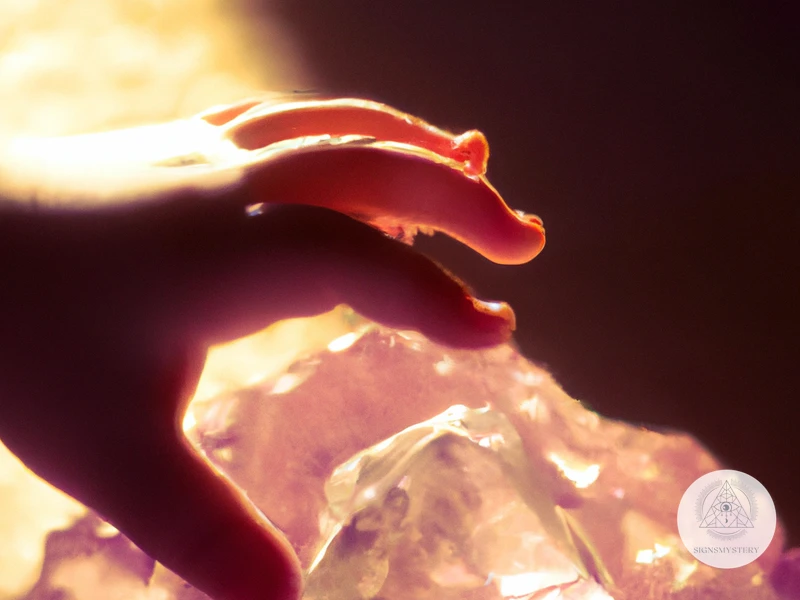
1. Can children benefit from crystal education?
Yes, children can benefit greatly from crystal education. It can enhance their creativity, promote mindfulness, and foster a deeper connection with nature.
2. Are crystals safe for children?
Yes, crystals are generally safe for children to handle and explore. However, it is important to choose safe and non-toxic crystals and provide supervision to ensure proper handling and prevent any accidents.
3. How do crystals enhance creativity in children?
The vibrant colors, unique shapes, and enchanting energy of crystals can inspire imagination and artistic expression in children. They can be used for storytelling, role-playing, and creative projects, stimulating the child’s creativity and imaginative thinking.
4. Can crystals help children with anxiety or stress?
Yes, certain crystals like amethyst and rose quartz have calming properties that can help children manage anxiety and stress. Holding or meditating with these crystals can promote relaxation and emotional well-being.
5. How can crystal education promote mindfulness in children?
By engaging with crystals, children can learn to focus their attention and be present in the moment. The act of holding or meditating with crystals can help children develop mindfulness practices and cultivate a sense of calm and centeredness.
6. What is the significance of fostering a connection with nature through crystals?
By introducing children to crystals and teaching them about their natural origins, we can instill a sense of wonder and appreciation for the Earth’s treasures. This connection with nature can nurture a desire to protect and care for the environment.
7. Are there any age restrictions for crystal education?
While there are no strict age restrictions, it is important to choose age-appropriate crystals and supervise younger children to ensure they handle them safely. Always consider the individual child’s maturity and understanding.
8. How can parents ensure the safe handling of crystals?
Parents can set clear safety rules, provide guidance on proper handling techniques, and teach children to respect the fragility of crystals. It is also essential to choose crystals with safety in mind, avoiding sharp or small pieces for younger children.
9. Can crystals be used for educational purposes in schools?
Yes, crystals can be incorporated into educational activities in schools. They can be used for science experiments, art projects, and as a creative tool to explore various subjects such as geology, colors, and spirituality.
10. Where can I find more resources on crystal education for children?
You can find books, guides, and websites dedicated to crystal education for children. Additionally, there are crystal-related apps available that provide interactive learning experiences for children of different ages.
References
Frequently Asked Questions

1. Can crystals have any negative effects on children?
While crystals are generally considered safe, it’s important to note that some crystals have specific properties that may not be suitable for children. For example, certain crystals may have a strong energy that can overwhelm or overstimulate young children. It’s recommended to research and choose crystals that are gentle and beneficial for children’s well-being.
2. How can crystals enhance a child’s creativity?
Crystals can stimulate a child’s imagination and creativity by offering a tactile and visual experience. By exploring different shapes, colors, and textures of crystals, children are encouraged to think creatively and express their ideas through play and art.
3. Do crystals have any scientific benefits for children?
While the scientific benefits of crystals are still debated, they have been used for centuries in various cultures for their potential healing and metaphysical properties. Introducing children to crystals can help them develop an awareness of the natural world and encourage a sense of wonder and exploration.
4. How can crystal education promote mindfulness in children?
Engaging with crystals can provide a sensory experience that encourages children to be present in the moment. Through mindful observation, handling, and meditation with crystals, children can learn to focus their attention and develop a greater sense of calmness and self-awareness.
5. Are there any specific safety rules for handling crystals?
It’s important to teach children to handle crystals with care to avoid any accidents. Some general safety rules include washing hands before and after handling crystals, not putting crystals in their mouths, and being cautious with sharp-edged crystals. Always supervise children during crystal exploration activities.
6. Are there any age limits for crystal education?
Crystal education can be introduced to children of various ages, but it’s important to consider their developmental stage and their ability to understand and appreciate the concept. Younger children may enjoy exploring crystals through sensory play, while older children can engage in more educational aspects of crystal learning.
7. How can I incorporate crystals into my child’s daily routine?
One way to incorporate crystals into a child’s daily routine is by creating a morning or bedtime ritual, where they can choose a crystal to hold or place near their bed. This can provide a calming and positive energy to start or end the day on a peaceful note.
8. What are some easy crystal art and crafts for children?
Children can engage in crystal-related crafts by making crystal-inspired jewelry, such as beaded bracelets or necklaces. They can also create crystal-themed artwork using watercolors or colored pencils, allowing them to express their creativity while learning about crystals.
9. Are there any reputable websites or apps for children’s crystal education?
There are several websites and apps available that offer interactive and educational resources for children to learn about crystals. Some popular options include “Crystal Kids” app and websites like “Crystal Vaults” and “Crystal Grids”. Always ensure the content is age-appropriate and reliable.
10. How can parents and caregivers nurture a child’s connection with nature through crystals?
Parents and caregivers can encourage a child’s connection with nature by taking them outdoors to collect crystals from nature, such as quartz or amethyst. They can discuss the origins of the crystals, explaining how they are formed within the Earth, and emphasizing the importance of respecting and appreciating the natural world.



